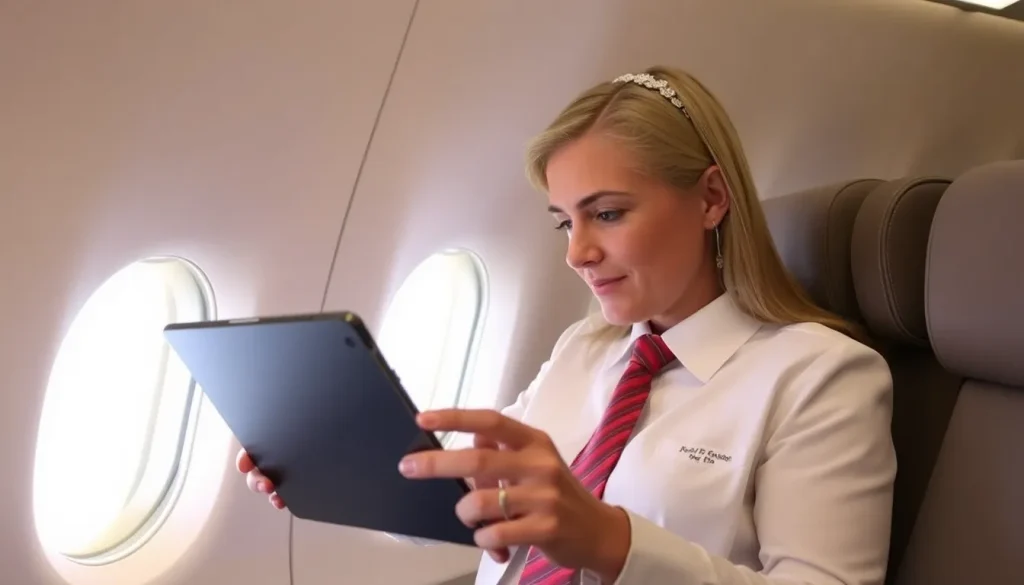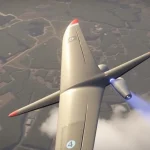Air traffic control warns Spirit flight to get off the iPad near Air Force One

In the fast-paced world of aviation, moments of tension and miscommunication can arise even in routine flights. One such incident recently highlighted the critical importance of maintaining focus in the cockpit, especially when distractions can lead to potentially dangerous situations. A humorous yet concerning exchange between air traffic control and the pilots of a Spirit Airlines flight serves as a stark reminder of this reality.
What Happened During the Spirit Airlines Flight?
During a routine approach into Boston, air traffic control contacted the crew of Spirit Airlines Flight 1300. The air traffic controller provided the frequency for the Boston area traffic control center, which would manage the aircraft's descent and landing. The call went as follows:
"Spirit 1300: Boston Center, 134.0."
However, the initial silence from the flight crew prompted the controller to express concern. He remarked, "I gotta talk to you twice every time," before reiterating the frequency. His frustration was evident, especially when the pilots finally acknowledged his instructions. In a parting quip, he advised, "Pay attention! Get off the iPad!"
The Role of Technology in Modern Aviation
This incident raises an important question about the role of technology, particularly the use of tablets like iPads in the cockpit. For many pilots, these devices have become indispensable tools, providing various functionalities that significantly enhance flight safety and efficiency. However, they also pose risks when distractions occur.
- Flight Planning: Pilots utilize tablets to access flight plans, weather updates, and real-time navigation data.
- Weather Information: Instant access to weather data helps pilots make informed decisions about their flight paths.
- Weight and Balance Calculations: Ensuring that an aircraft is loaded correctly is crucial for safe operations, and tablets simplify these calculations.
- NOTAM Checks: Pilots can easily check Notices to Airmen (NOTAMs), which provide essential information about potential hazards along their route.
- Maps and Charts: Digital maps and charts are readily available, allowing for quick reference during flight.
Despite their benefits, the increasing reliance on tablets can lead to situations where pilots may become overly engaged with these devices, potentially at the expense of their primary responsibility: flying the aircraft.
The Balance Between Technology and Attention
While technology in aviation undoubtedly improves operational efficiency, it is crucial for pilots to strike a balance between leveraging these tools and maintaining situational awareness. This incident with Spirit Airlines serves as a reminder that distractions, even from devices designed to aid pilots, can have serious consequences. Here are some key points to consider:
- Minimize Distractions: Pilots should establish protocols to minimize distractions from electronic devices during critical phases of flight.
- Training and Awareness: Regular training sessions can help reinforce the importance of situational awareness and the potential risks of distractions.
- Communication is Key: Open lines of communication between air traffic control and flight crews are essential to ensure safety.
Understanding the Importance of Situational Awareness
Situational awareness is the cornerstone of safe aviation operations. It refers to a pilot's ability to perceive and understand what is happening around them in relation to their flight. Here are some fundamental aspects of situational awareness that pilots must maintain:
- Environmental Awareness: Understanding weather conditions, air traffic, and potential hazards in the vicinity.
- Aircraft Status: Monitoring the aircraft's performance and systems to detect any irregularities.
- Communication with Crew: Ensuring all crew members are informed and engaged in the flight operations.
Incorporating structured practices that promote situational awareness can help mitigate risks associated with distractions and technological dependence.
Conclusion: A Step Toward Better Safety Practices
Ultimately, the safe operation of an aircraft hinges on the pilots' ability to stay focused and attentive. While technology like iPads can enhance flight operations, they should not replace the fundamental skills and responsibilities of flying. The humorous admonishment from air traffic control serves as a light-hearted yet serious reminder of the need for vigilance in the cockpit.
For a visual representation of the importance of communication in aviation, check out this interesting video:
As the aviation industry continues to evolve, it is imperative that pilots, air traffic controllers, and all stakeholders remain committed to prioritizing safety and minimizing distractions. Through ongoing training, effective communication, and mindful use of technology, the skies can remain safe for all travelers.




Leave a Reply